An Engine Load Monitoring Approach for Quantifying Yearly Methane Slip Emissions from an LNG-Powered RoPax Vessel
Abstract
1. Introduction
2. Materials and Methods
2.1. Ship, Engine, and Operating Conditions
2.2. Emission Measurements
2.3. Engine Load Monitoring Method
- (a)
- Emission values at different engine loads.
- Linear extrapolation using the two closest points if the lowest measured load is ≤ 10%;
- Polynomial interpolation using all measured points if the lowest measured load is 25%;
- Linear extrapolation using the two closest points if the highest measured load is ≥ 90%;
- Polynomial interpolation using all measured points if the highest measured load is 75%.
- (b)
- Load monitoring.
- (c)
- Calculations.
- The total fuel mass (in kg) consumed during each 30 min interval is calculated using data from the fuel flow meter.
- The emission factor (as a percentage) corresponding to the average engine load during the interval is obtained from the measurement data, as outlined in Point 1.
- The methane emission mass (in kg) for the interval is computed by multiplying the total fuel mass of the 30 min interval by the emission factor.
- The annual weighted slip coefficient (Cslip) for the whole monitoring period is achieved by dividing the total emission (kg) over the reporting period by the total fuel mass (in kg) consumed during the same period.
3. Results
3.1. Methane Emission Factor
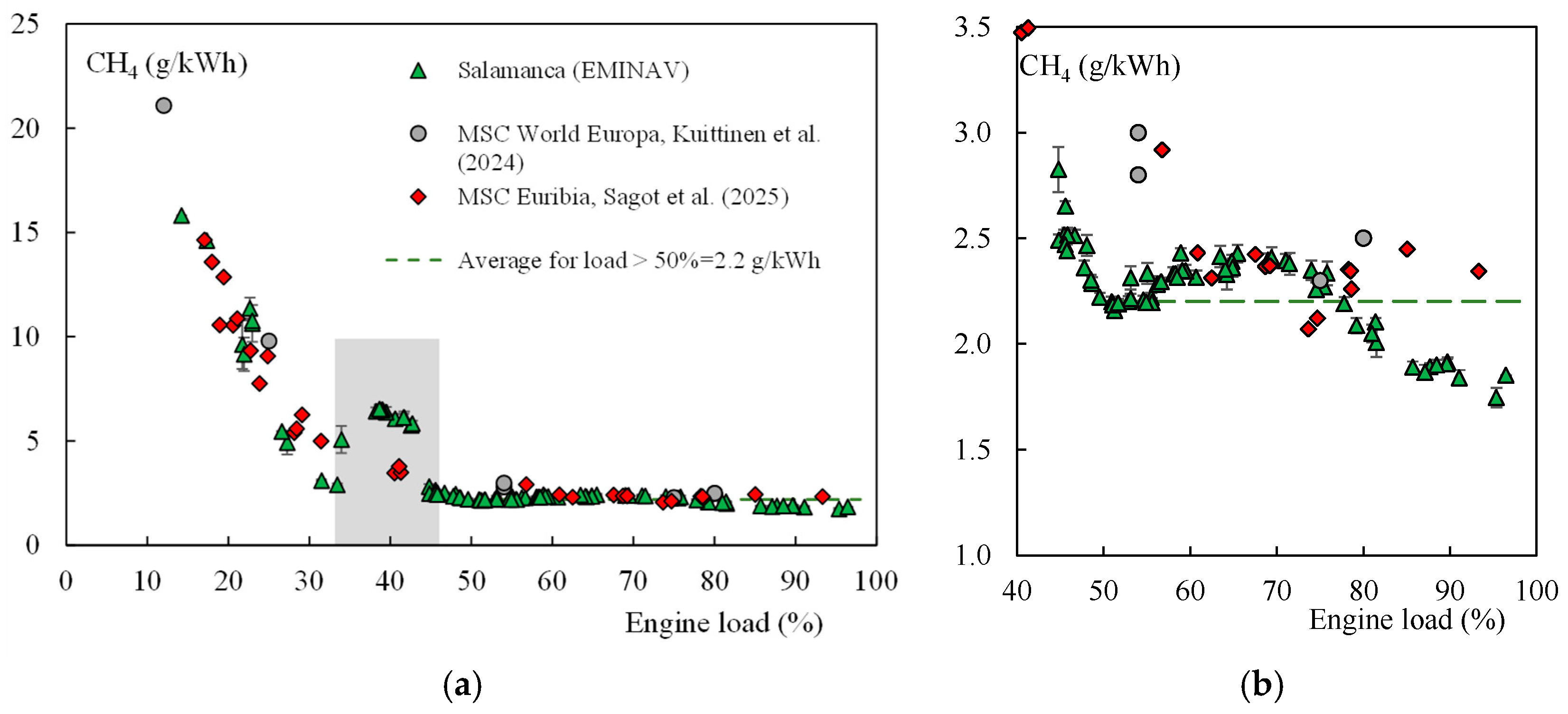
3.2. Analyses of the Non Linearity in the Emission Factor Curve
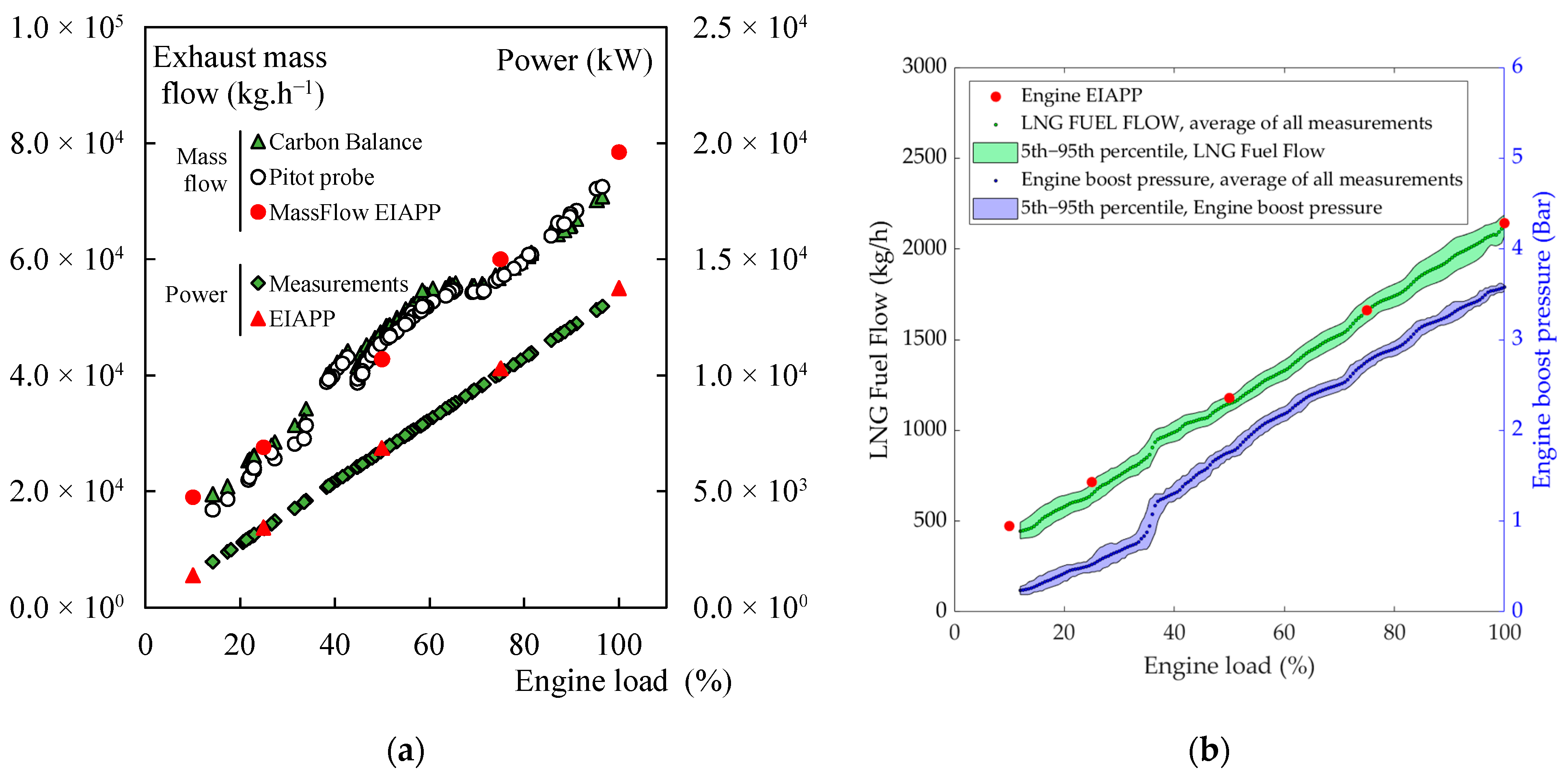
3.3. Application of the Engine Load Monitoring Method for the Calculation of the Annual Methane Slip Coefficient
3.4. Investigation on the Parameters of the ELM Procedure, and Discussion
4. Conclusions
Author Contributions
Funding
Data Availability Statement
Acknowledgments
Conflicts of Interest
Abbreviations
| COV | Coefficient Of Variance, defined as the ratio of the standard deviation to the mean |
| EIAPP | Engine International Air Pollution Prevention |
| ELM | Engine Load Monitoring |
| GFI | Greenhouse gas Fuel Intensity |
| GHG | Greenhouse gas |
| GWP | Global Warming Potential |
| HFO | Heavy Fuel Oil |
| IMO | International Maritime Organization |
| LNG | Liquefied Natural Gas |
| LHV | Lower Heating Value |
| LCA | Life Cycle Assessment |
| ME2 | Main Engine 2 |
| MGO | Marine Gas Oil |
| NDIR | Non-Dispersive InfraRed |
References
- Balcombe, P.; Staffell, I.; Kerdan, I.G.; Speirs, J.F.; Brandon, N.P.; Hawkes, A.D. How Can LNG-Fuelled Ships Meet Decarbonisation Targets? An Environmental and Economic Analysis. Energy 2021, 227, 120462. [Google Scholar] [CrossRef]
- Corbin, J.C.; Peng, W.; Yang, J.; Sommer, D.E.; Trivanovic, U.; Kirchen, P.; Miller, J.W.; Rogak, S.; Cocker, D.R.; Smallwood, G.J.; et al. Characterization of Particulate Matter Emitted by a Marine Engine Operated with Liquefied Natural Gas and Diesel Fuels. Atmos. Environ. 2020, 220, 117030. [Google Scholar] [CrossRef]
- Anderson, M.; Salo, K.; Fridell, E. Particle- and Gaseous Emissions from an LNG Powered Ship. Environ. Sci. Technol. 2015, 49, 12568–12575. [Google Scholar] [CrossRef] [PubMed]
- Peng, W.; Yang, J.; Corbin, J.; Trivanovic, U.; Lobo, P.; Kirchen, P.; Rogak, S.; Gagné, S.; Miller, J.W.; Cocker, D. Comprehensive Analysis of the Air Quality Impacts of Switching a Marine Vessel from Diesel Fuel to Natural Gas. Environ. Pollut. 2020, 266, 115404. [Google Scholar] [CrossRef] [PubMed]
- Lehtoranta, K.; Aakko-Saksa, P.; Murtonen, T.; Vesala, H.; Ntziachristos, L.; Rönkkö, T.; Karjalainen, P.; Kuittinen, N.; Timonen, H. Particulate mass and nonvolatile particle number emissions from marine engines using low-sulfur fuels, natural gas, or scrubbers. Environ. Sci. Technol. 2019, 53, 3315–3322. [Google Scholar] [CrossRef] [PubMed]
- Aakko-Saksa, P.T.; Lehtoranta, K.; Kuittinen, N.; Järvinen, A.; Jalkanen, J.P.; Johnson, K.; Jung, H.; Ntziachristos, L.; Gagné, S.; Takahashi, C.; et al. Reduction in Greenhouse Gas and Other Emissions from Ship Engines: Current Trends and Future Options. Prog. Energy Combust. Sci. 2023, 94, 101055. [Google Scholar] [CrossRef]
- Lehtoranta, K.; Kuittinen, N.; Vesala, H.; Koponen, P. Methane Emissions from a State-of-the-Art LNG-Powered Vessel. Atmosphere 2023, 14, 825. [Google Scholar] [CrossRef]
- Kuittinen, N.; Heikkilä, M.; Lehtoranta, K. Review of Methane Slip from LNG Engines; Green Ray Project. Deliverable D1.1; GREEN RAY, EU: Brussels, Belgium, 2023. [Google Scholar]
- Stenersen, D.; Thonstad, O. GHG and NOx Emissions from Gas Fuelled Engines; Mapping, Verification, Reduction Technologies; SINTEF Ocean AS: Trondheim, Norway, 2017; pp. 1–52. [Google Scholar]
- MEPC 81-2024 GUIDELINES ON LIFE CYCLE GHG INTENSITY OF MARINE FUELS (2024 LCA GUIDELINES). Available online: https://wwwcdn.imo.org/localresources/en/OurWork/Environment/Documents/annex/MEPC 81/Annex 10.pdf (accessed on 25 February 2025).
- FuelEU Maritime. Regulation (EU) 2023 of the European Parliament and of the Council on the Use of Renewable and Low-Carbon Fuels in Maritime Transport, and Amending Directive 2009/16/EC, 2023. Available online: https://eur-lex.europa.eu/eli/reg/2023/1805/oj (accessed on 27 February 2025).
- Kuittinen, N.; Koponen, P.; Vesala, H.; Lehtoranta, K. Methane Slip and Other Emissions from Newbuild LNG Engine under Real-World Operation of a State-of-the Art Cruise Ship. Atmos. Environ. X 2024, 23, 100285. [Google Scholar] [CrossRef]
- Sagot, B.; Giraudier, G.; Decuniac, F.; Lefebvre, L.; Miquel, A.; Thomas, A. On-Board Measurement of Emissions on a Dual Fuel LNG Powered Cruise Ship: A Sea Trial Study. Atmos. Environ. X 2025, 25, 100313. [Google Scholar] [CrossRef]
- Balcombe, P.; Heggo, D.A.; Harrison, M. Total Methane and CO2 Emissions from Liquefied Natural Gas Carrier Ships: The First Primary Measurements. Environ. Sci. Technol. 2022, 56, 9632–9640. [Google Scholar] [CrossRef] [PubMed]
- Ushakov, S.; Stenersen, D.; Einang, P.M. Methane Slip from Gas Fuelled Ships: A Comprehensive Summary Based on Measurement Data. J. Mar. Sci. Technol. 2019, 24, 1308–1325. [Google Scholar] [CrossRef]
- MEPC, IMO Resolution. 177 (58), 2008. Amendments to the Technical Code on Control of Emission of Nitrogen Oxides from Marine Diesel Engines (NOx Technical Code 2008) IMO London. Available online: https://wwwcdn.imo.org/localresources/en/OurWork/Environment/Documents/177(58).pdf (accessed on 27 February 2025).
- Kuczyński, S.; Łaciak, M.; Szurlej, A.; Włodek, T. Impact of Liquefied Natural Gas Composition Changes on Methane Number as a Fuel Quality Requirement. Energies 2020, 13, 5060. [Google Scholar] [CrossRef]
- Lehtoranta, K.; Vesala, H.; Flygare, N.; Kuittinen, N.; Apilainen, A.-R. Measuring Methane Slip from LNG Engines with Different Devices. J. Mar. Sci. Eng. 2025, 13, 890. [Google Scholar] [CrossRef]
- Rochussen, J.; Jaeger, N.S.B.; Penner, H.; Khan, A.; Kirchen, P. Development and Demonstration of Strategies for GHG and Methane Slip Reduction from Dual-Fuel Natural Gas Coastal Vessels. Fuel 2023, 349, 128433. [Google Scholar] [CrossRef]
- Moutik, B.; Benedetti, G. Onboard Methane Slip Emissions Measurement: Practical Insights and Industry Lessons Learned; SGMF: London, UK, 2025. [Google Scholar]



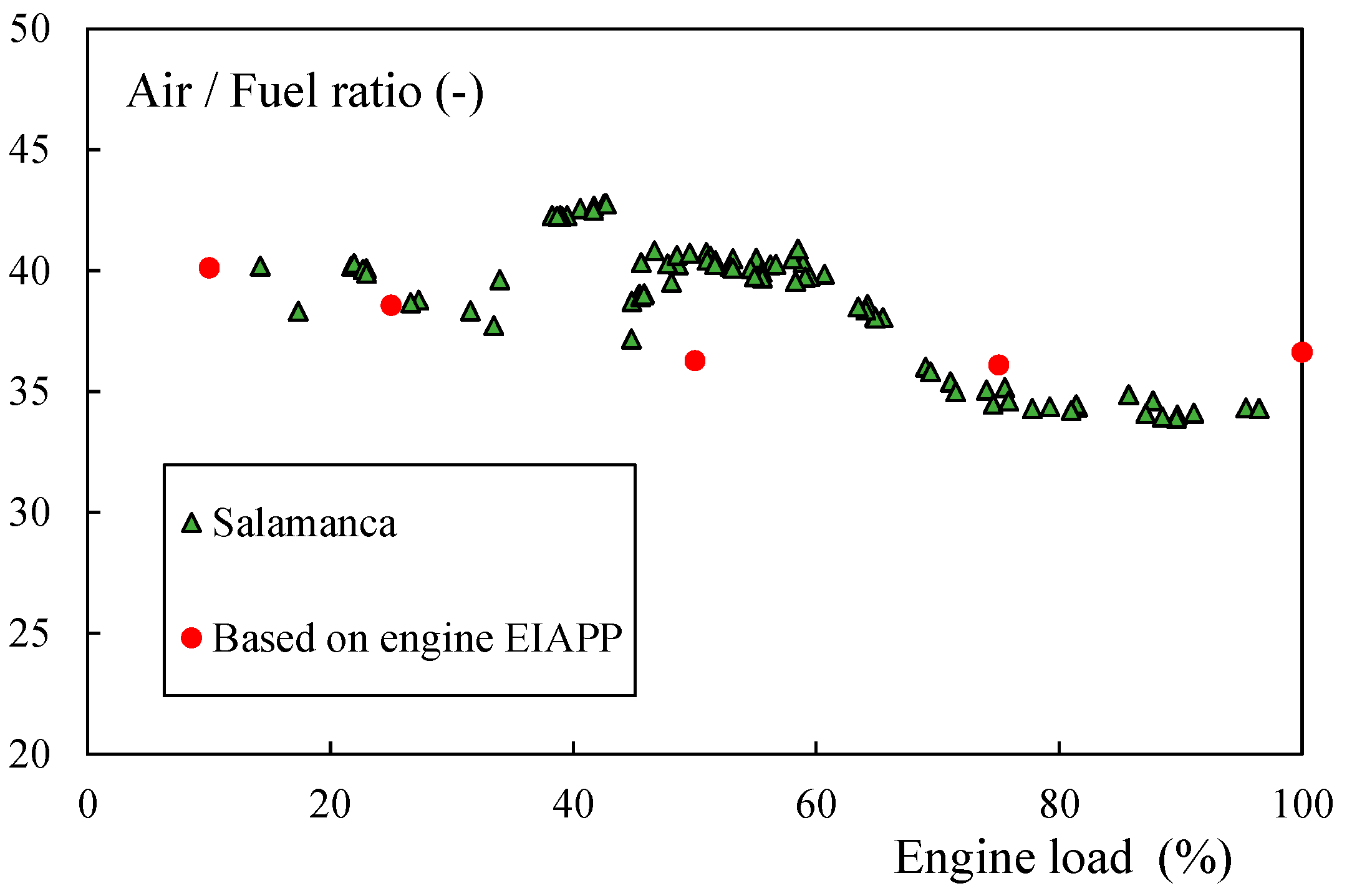
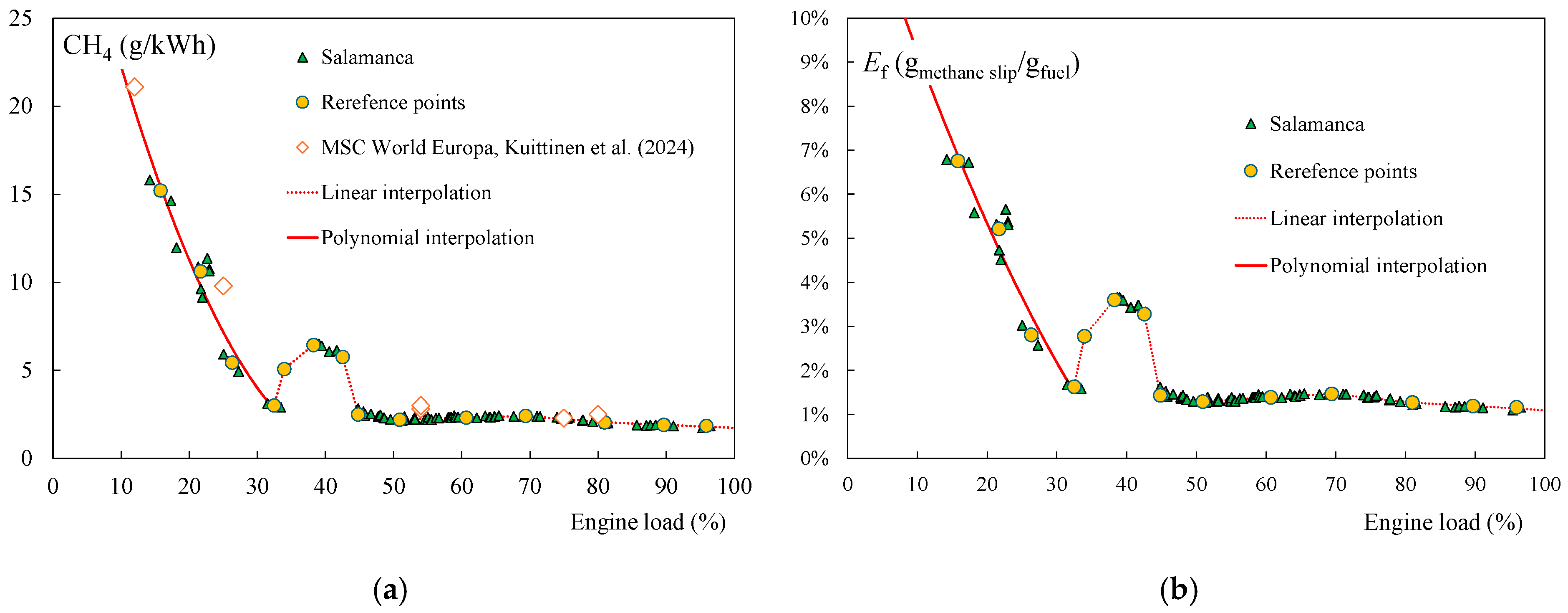

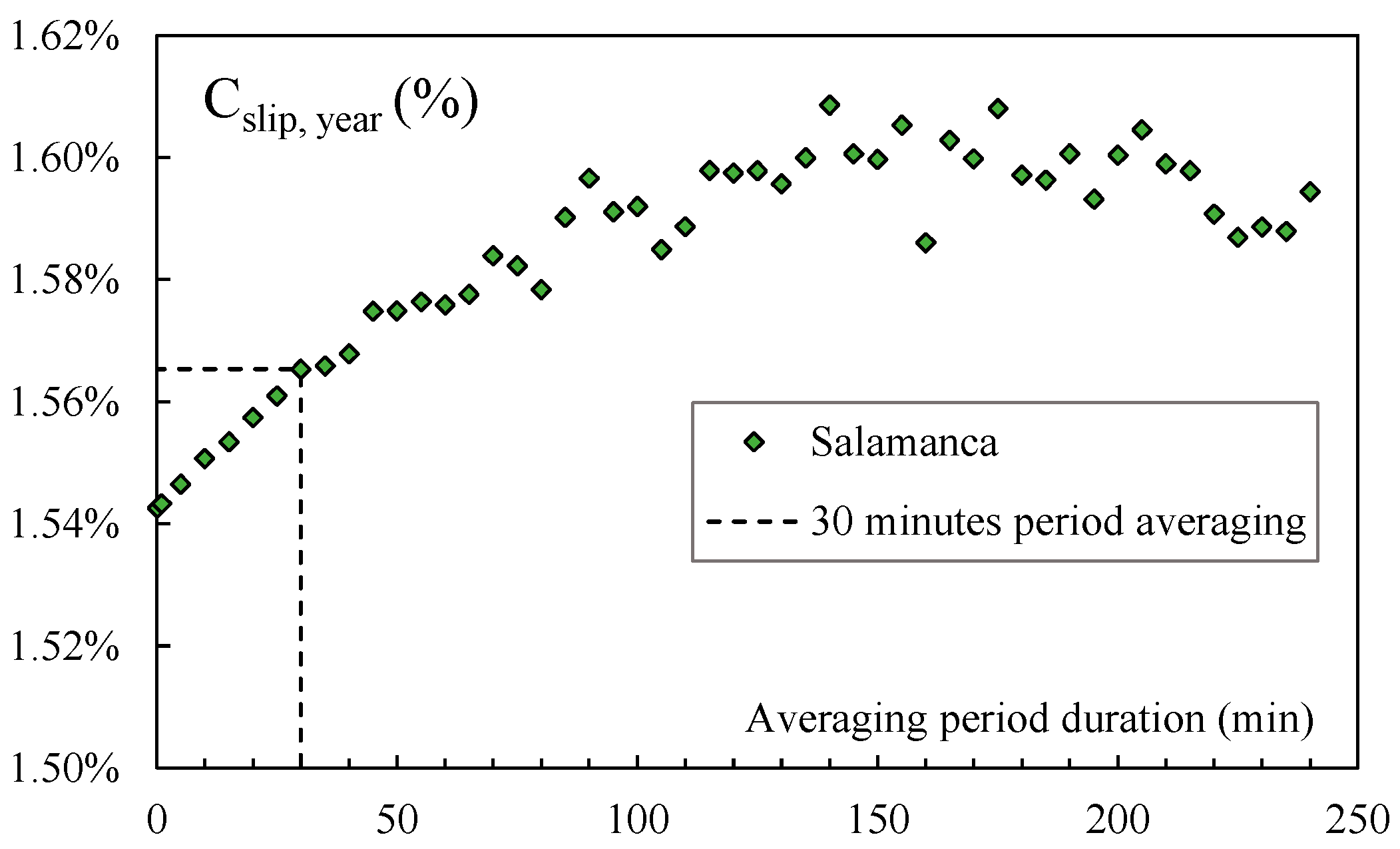
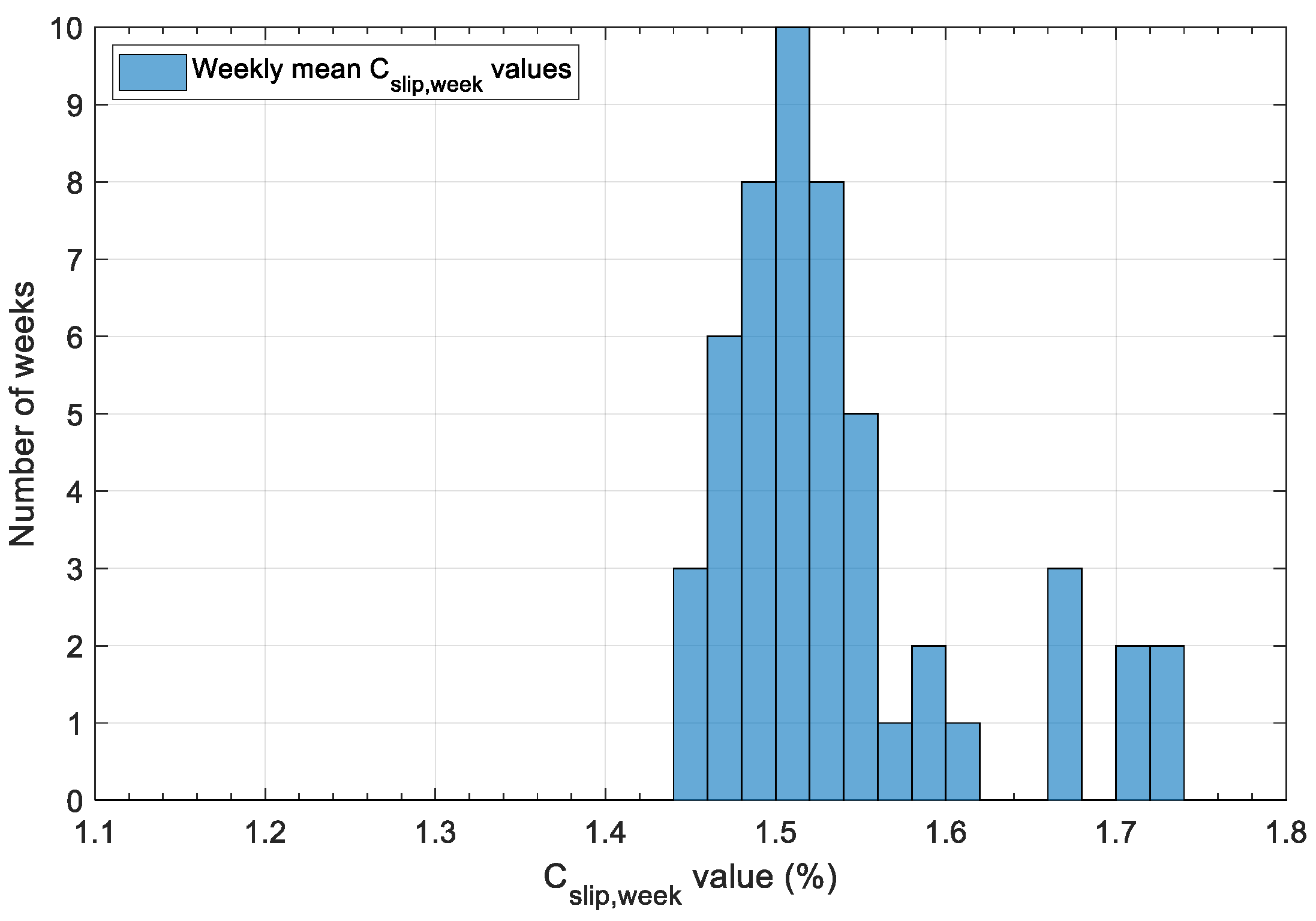
| Methane (m-%) | Ethane (m-%) | Propane (m-%) | LHV (MJ/kg) | MN (-) | |
|---|---|---|---|---|---|
| Average over year 2023 (COV%) | 94.3 (1.2%) | 4.2 (21.5%) | 0.9 (29.8%) | 50.6 (1.2%) | 79.7 (2.9%) |
| Measurement campaign, May 2023 | 94.14 | 3.96 | 1.26 | 51.6 | 78 |
| Test bed (EIAPP) | 95.76 | 2.56 | 0.57 | 48.1 | 85 |
| Monitoring Duration | Number of Points | Average Load (%) | Average Load COV (%) | Maximum Load COV (%) | Average CH4 COV (%) | Maximum CH4 COV (%) |
|---|---|---|---|---|---|---|
| 5 to 10 min | 51 | 52% | 1.4% | 4.8% | 2.7% | 12.7% |
| 10 min | 31 | 64% | 1.3% | 4.0% | 1.6% | 3.3% |
Disclaimer/Publisher’s Note: The statements, opinions and data contained in all publications are solely those of the individual author(s) and contributor(s) and not of MDPI and/or the editor(s). MDPI and/or the editor(s) disclaim responsibility for any injury to people or property resulting from any ideas, methods, instructions or products referred to in the content. |
© 2025 by the authors. Licensee MDPI, Basel, Switzerland. This article is an open access article distributed under the terms and conditions of the Creative Commons Attribution (CC BY) license (https://creativecommons.org/licenses/by/4.0/).
Share and Cite
Sagot, B.; Defossez, R.; Mahi, R.; Villot, A.; Joubert, A. An Engine Load Monitoring Approach for Quantifying Yearly Methane Slip Emissions from an LNG-Powered RoPax Vessel. J. Mar. Sci. Eng. 2025, 13, 1379. https://doi.org/10.3390/jmse13071379
Sagot B, Defossez R, Mahi R, Villot A, Joubert A. An Engine Load Monitoring Approach for Quantifying Yearly Methane Slip Emissions from an LNG-Powered RoPax Vessel. Journal of Marine Science and Engineering. 2025; 13(7):1379. https://doi.org/10.3390/jmse13071379
Chicago/Turabian StyleSagot, Benoit, Raphael Defossez, Ridha Mahi, Audrey Villot, and Aurélie Joubert. 2025. "An Engine Load Monitoring Approach for Quantifying Yearly Methane Slip Emissions from an LNG-Powered RoPax Vessel" Journal of Marine Science and Engineering 13, no. 7: 1379. https://doi.org/10.3390/jmse13071379
APA StyleSagot, B., Defossez, R., Mahi, R., Villot, A., & Joubert, A. (2025). An Engine Load Monitoring Approach for Quantifying Yearly Methane Slip Emissions from an LNG-Powered RoPax Vessel. Journal of Marine Science and Engineering, 13(7), 1379. https://doi.org/10.3390/jmse13071379









